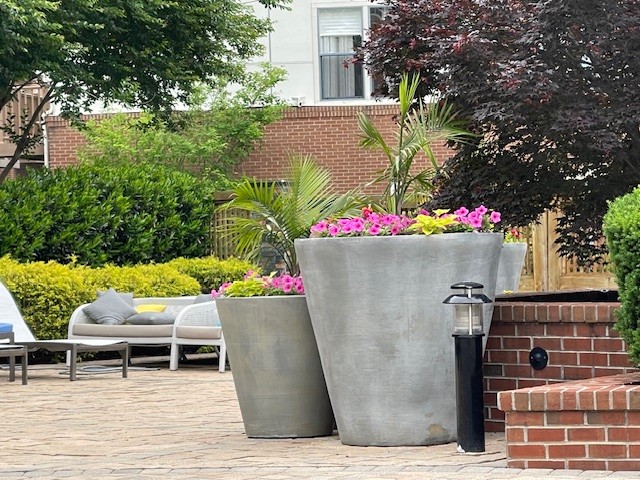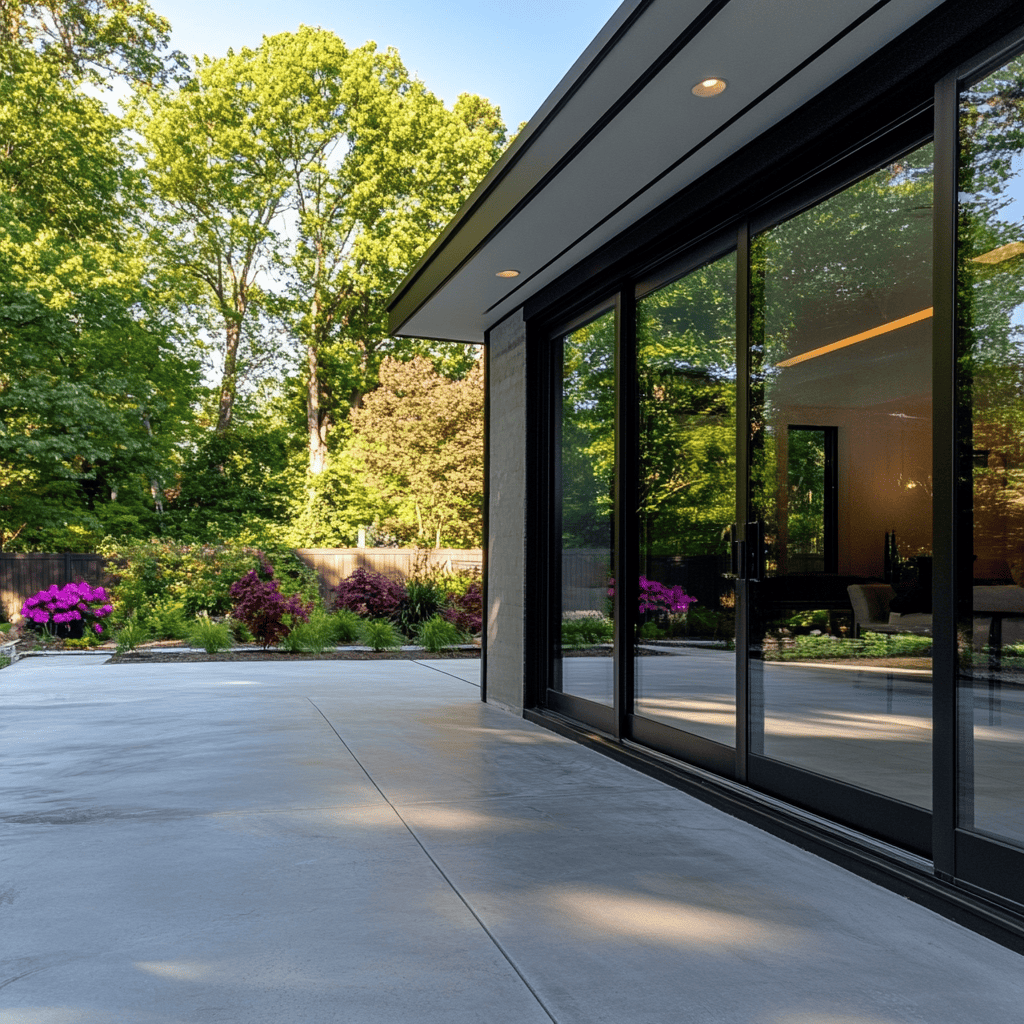When severe weather strikes Centreville, VA, fallen trees and damaged branches can create immediate safety hazards, block access routes, and cause significant property damage. WC Landscape provides professional storm damage tree cleanup services with 24/7 emergency response capabilities, helping Centreville residents and businesses restore safety and normalcy after destructive weather events. Our experienced team combines over 40 years of tree care expertise with specialized storm cleanup equipment to handle everything from single fallen trees to extensive multi-property damage scenarios. We work directly with insurance companies to document damage, provide detailed assessments, and execute safe, efficient cleanup operations that protect your property while expediting the restoration process.



Storm damage doesn't wait for convenient hours, which is why WC Landscape maintains round-the-clock emergency response capabilities for Centreville area storm cleanup. Our emergency team can be mobilized within hours of your call, prioritizing life safety situations and property protection needs.
Our emergency response includes:
Centreville's location in Northern Virginia makes it susceptible to various severe weather patterns, including thunderstorms, ice storms, and occasional hurricane remnants. Our team understands the specific weather patterns affecting Fairfax County and maintains equipment positioning to respond quickly when storms threaten the area.
Fallen trees present complex removal challenges requiring specialized equipment and safety expertise. Our certified arborists and experienced removal specialists handle trees that have fallen onto structures, vehicles, power lines, or across roadways with precision and safety.
Not all storm-damaged trees require immediate removal. Many can be saved through proper assessment and corrective measures. Our certified arborists evaluate storm-damaged trees to determine the best course of action for long-term tree health and property safety.
Storm-damaged trees often have partially attached branches hanging precariously, creating ongoing safety hazards. These "hangers" or "widow makers" require immediate professional attention due to their unpredictable nature.
Insurance claims for storm damage require detailed documentation and professional assessment. WC Landscape provides comprehensive damage evaluation services that help streamline your insurance claim process while ensuring accurate coverage for necessary work.
Many insurance companies prefer working with established, professional tree service companies for storm damage cleanup. WC Landscape maintains relationships with major insurance providers serving the Centreville area.
Effective storm cleanup requires specialized equipment capable of handling large debris volumes safely and efficiently. WC Landscape maintains a modern fleet of storm cleanup equipment specifically designed for emergency response situations.
Storm cleanup operations present unique safety challenges due to unstable trees, damaged infrastructure, and often wet or slippery conditions. Our team follows strict safety protocols developed specifically for emergency response situations.
Centreville's location in Northern Virginia exposes trees to various wind patterns that create predictable damage types. Understanding these patterns helps property owners identify potential problems and plan preventive measures.
Ice storms present unique challenges for Centreville trees, with accumulating ice creating weight loads far exceeding normal design limits for tree structures.
Heavy rainfall events can cause tree failures through soil saturation and root system compromise, particularly in Centreville's clay soil conditions.
Centreville's geographic location in Northern Virginia creates specific weather patterns that influence storm damage frequency and severity. Understanding these local conditions helps property owners prepare for potential damage scenarios.
Centreville's tree population includes both native and landscape species with varying storm resistance characteristics. Knowing which species are most vulnerable helps prioritize preventive care and emergency preparedness.
Centreville's developed neighborhoods present unique challenges for storm cleanup due to infrastructure density and accessibility limitations.
After storm events, many trees suffer damage that isn't immediately apparent. Professional assessment helps identify trees that may pose future hazards or require corrective treatment for long-term survival.
Trees surviving storm damage often benefit from corrective pruning and treatment programs designed to promote healing and prevent future problems.
Regular tree maintenance significantly reduces storm damage risk by maintaining proper tree structure and removing potential failure points before severe weather arrives.
Strategic landscape planning can reduce storm damage risk by selecting appropriate species and positioning trees to minimize hazard potential.
Spring weather in Centreville often brings severe thunderstorms with high winds, hail, and occasional tornadoes. Proper preparation during early spring can prevent significant damage during peak storm season.
Summer storms often feature intense winds, heavy rainfall, and lightning. Tree care during summer focuses on maintaining tree health during stress periods while preparing for sudden, severe weather.
Fall weather patterns bring different storm types, including nor'easters and early ice events. Tree preparation focuses on strengthening trees for winter weather while managing fall cleanup needs.
Winter storms in Centreville primarily feature ice accumulation and occasional heavy snow loads. Protection strategies focus on preventing ice damage and maintaining tree health during dormant periods.
Storm cleanup generates significant amounts of organic debris. WC Landscape employs environmentally responsible processing methods that maximize resource recovery while minimizing waste.
Heavy equipment operations during storm cleanup can cause significant soil compaction and damage. Proper techniques protect soil health while accomplishing necessary cleanup work.
Storm-damaged trees frequently involve contact with electrical systems, creating life-threatening hazards requiring specialized safety protocols and utility company coordination.
Trees fallen onto buildings require careful assessment to prevent additional structural damage during removal operations.
Storm damage cleanup pricing reflects the urgency, complexity, and risk factors associated with emergency response work. Understanding cost factors helps property owners budget for potential storm damage scenarios.
Understanding typical homeowner insurance coverage helps property owners plan for storm damage costs and coordinate with insurance providers effectively.
WC Landscape maintains 24/7 emergency response capabilities and can typically have a crew on-site within 2-4 hours of your call, depending on storm severity and call volume. Our emergency response prioritizes life safety situations first, followed by property protection needs and access restoration. During major storm events affecting the entire Centreville area, response times may be extended, but we maintain communication with all emergency clients regarding expected arrival times and priorities.
Most standard homeowner's insurance policies cover tree removal when the tree falls due to a covered peril like wind or lightning, with typical coverage limits ranging from $500 to $1,000 per tree, with overall limits of $5,000 to $25,000 per occurrence. Coverage usually applies when trees fall on insured structures, block driveways, or damage covered property, but generally excludes trees that simply fall in yards without causing property damage. We recommend reviewing your specific policy details and can provide documentation to support your insurance claim.
First, avoid approaching the fallen tree and assume any nearby power lines are energized and dangerous. Call 911 if there are immediate safety concerns, then contact your insurance company to report the damage and WC Landscape for professional assessment and removal. Take photographs from a safe distance for insurance documentation, but do not attempt to move debris or cut the tree yourself. If the tree has damaged your home's roof, protect interior areas from weather exposure using tarps or plastic sheeting until professional repairs can begin.
Many storm-damaged trees can be saved through proper assessment and corrective treatment, depending on the extent of damage to the crown, trunk, and root system. Our certified arborists evaluate factors like percentage of crown loss, trunk damage severity, root system integrity, and overall tree health to determine if recovery is viable. Trees with less than 50% crown loss and minimal trunk damage often recover well with proper pruning and care, while trees with major trunk splits, extensive root damage, or over 75% crown loss typically require removal for safety reasons.
WC Landscape maintains established relationships with Dominion Energy and follows strict protocols when trees are near power lines. We never attempt the removal of trees in contact with electrical lines and instead coordinate with utility companies for safe disconnection before proceeding with removal work. The utility company typically handles line clearance and restoration, while we focus on tree removal and debris cleanup once electrical hazards are eliminated. This coordination may add time to the removal process, but ensures worker and public safety.
For trees fallen on structures, we utilize specialized equipment, including crane services for heavy lifting, bucket trucks for aerial access, and sectional removal techniques to prevent additional building damage. Our approach typically involves strategic cutting to reduce weight gradually, using rigging systems to control piece movement, and placing protective materials to shield roofing and siding during removal. Equipment selection depends on tree size, building type, access availability, and structural damage severity.
Our storm cleanup services include complete debris removal, site cleanup, stump grinding of damaged root systems, and basic property restoration like lawn repair and mulch application. We coordinate with other contractors for structural repairs, but focus our services on tree-related cleanup and restoration. Our goal is to leave your property clean and safe, ready for any necessary building repairs or landscape restoration work that may be required.
Preventive tree maintenance should be scheduled annually, ideally during late fall or winter when trees are dormant and before spring storm season begins. Emergency pruning for obvious hazards should be addressed immediately, regardless of season, while routine maintenance can be planned during optimal timing for tree health. We recommend scheduling annual inspections in early spring to identify winter damage and prepare trees for the coming storm season, with follow-up maintenance scheduled based on inspection findings.
WC Landscape provides detailed documentation, including pre-removal photographs showing damage extent, written damage assessments describing work required, itemized cost estimates for removal and cleanup services, and progress photographs throughout the removal process. We can coordinate directly with insurance adjusters when requested and provide completion documentation showing finished work. Our documentation follows insurance industry standards and includes all information typically required for claim processing and approval.
Trees that should be considered for preventive removal include Bradford Pears due to inherent structural weakness, trees with significant deadwood or disease, specimens growing too close to power lines or structures, and trees with root damage from construction or soil changes. Our arborists can identify specific hazard trees during property assessments, considering factors like species characteristics, health condition, structural integrity, and proximity to valuable targets. Preventive removal is often more cost-effective than emergency removal after storm damage occurs.